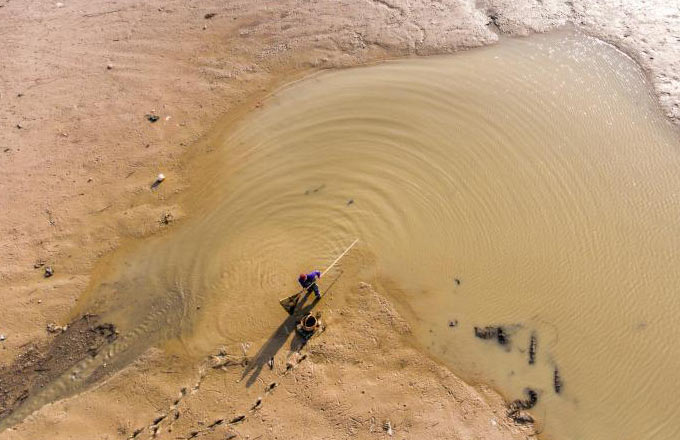Hunting for ripples from the Big Bang
Qinghai-Tibet Plateau one of 'the best' places to detect gravitational waves
China is building a new facility to detect primordial gravitational waves-tiny ripples in the fabric of space-time that were generated during the birth of the universe.
The facility is located 5,250 meters above sea level in Ngari prefecture, in the western part of the Qinghai-Tibet Plateau, where the air is thin and dry-"an ideal place to detect possibly the weakest type of gravitational waves", said Zhang Xinmin, the project's lead scientist.
Its first telescope is set to be completed by the end of 2019, and the facility will be operational in 2020, said Zhang, who is also a researcher at the Chinese Academy of Sciences' Institute of High Energy Physics.
"It will be the world's highest observatory for primordial gravitational waves," he said, adding that there are only four ideal locations on Earth suitable to detect such waves. The other three are in Antarctica, Chile's Atacama Desert and Greenland. "The one we have is the best spot in the northern hemisphere," Zhang said.
Apart from searching for the waves, scientists also plan to detect cosmic rays with high precision and build China's largest optical telescope, he said.
Chinese universities and institutes, as well as research organizations from Japan and the United States, are interested in joining the projects in Ngari, said Xue Suijian, deputy director of the National Astronomical Observatories of China.
"China should utilize the unique geographical advantage of the Qinghai-Tibet Plateau, also known as the 'Roof of the World', to advance science, along with Tibetans' social and economic development," Xue said.
Primordial waves were generated immediately after the Big Bang about 13.8 billion years ago, hence they are called "the first cry of the universe", Zhang said. The waves are so ancient that only traces are left in the residual radiation from the universe's early moments. "Studying these waves can help prove many of our hypotheses and unravel the origin and evolution of the universe," he said.
While these discoveries are exciting for scientists, applications using gravitational waves are still decades away. However, "detecting these waves requires extremely precise and advanced equipment, ranging from lasers to data analysis," he said. "These tools might be useful in our daily life in the future."
Apart from the facility in Ngari, China also has two other science projects in the works dedicated to detecting gravitational waves: Project Taiji and Project TianQin, according to Xinhua News Agency.
In Project Taiji, China plans to launch three satellites around 2030 to detect waves created by black holes. In Project TianQin, the country plans to spend 15 billion yuan ($2.26 billion) to build a gravitational wave detection network consisting of satellites and land observatories by 2035.




























